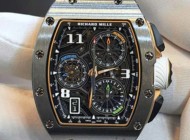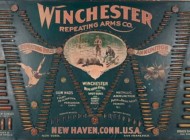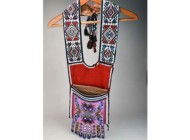
Among the top sellers of Leica cameras manufactured by Ernst Leitz GmbH of Wetzlar, Germany, this rare Leica M2 rangefinder was the most desirable, surpassing its $600-$2,500 estimate to claim $20,910. Auctioneer Dana Tharp explained that the popularity of these cameras stems from their role in press photography where they were considered professional, discreet and unobtrusive. Also contributing to the rarity of the black paint camera body was the fact that so few were made.
Review by W.A. Demers
WILLOUGHBY, OHIO — Rare cameras and photographic equipment were the focus of Dana J. Tharp’s auction on November 9. The top ranks of the 444-lot sale were dominated by Leica cameras manufactured by Ernst Leitz GmbH of Wetzlar, Germany, a global source for high-end cameras and lenses. Topping the sale, a rare Leica M2 rangefinder by Leitz jumped its $600-$2,500 estimate and sold for $20,910. The Leica M2 is a 35mm rangefinder camera, introduced in 1957. Approximately 82,000 M2s were manufactured in the decade between 1957 and 1968. These cameras were considered professional, discreet and unobtrusive, said Tharp, due to their role in press photography. The black paint camera body proved desirable, too, because so few of them were made, and that fascination apparently remains.
Also desirable to bidders was a Leica M2 rangefinder camera with silver and black body. It came with a Summicron f/1.2 lens and surpassed its $600/900 estimate to pull in $3,690.
The first lot across the block was a No. 10 Cirkut panoramic camera, a complete kit with tripod that brought $1,599. The No. 10 Cirkut camera, made 1934-1940, was manufactured by Eastman Kodak. The film back on this camera could accommodate 6-, 8- or 10-inch-wide rollfilm. Rotation speed and exposure time were both variable, giving a variety of picture lengths. This lot had an extensive catalog note from the consignor confirming its examination and tune up by the world’s best Cirkut camera specialist, Jim Lipari, of Omaha Neb., and its function and features. He noted, “If the photographer had a sense of humor, the same person can be in the photo two times in two different places, usually on both ends. These Cirkut prints are called ‘run-arounds’ and are very collectible and are two or three times more expensive.”

This Leica M2 rangefinder camera with silver and black body proved desirable to bidders. It came with a Summicron f/1.2 lens and surpassed its $600/900 estimate to pull in $3,000.
Back on the Leica 35mm hunt, a Leica M4 rangefinder camera exceeded its high estimate somewhat, clocked in at $1,168. It came fitted with an Elmar f/4 lens and a Wetzlar Germany UA filter.
Another Leica M2 rangefinder camera with silver and black body made $923 against a $300/500 estimate.
The cameras were the obvious stars of the sale, but a curious piece of antique photographic equipment made it into the top ten, earning $923. It was an extremely rare 1840s head rest used by portrait photographers and an invention that all serious lovers of photography seek for their collections. The Head Rest, also known as an ear clip and head clamp, was a must-have accessory in any Nineteenth Century portrait studio, according to the auction catalog. That’s because absent bright sunlight, it was usual for a daguerreotype exposure to last up to two minutes and it was a challenge for sitters to keep their heads still. Catalog notes state that in 1839, Louis Daguerre said that “portraits would be impossible unless the head could be fixed by means of supporting apparatus.” American inventor Alexander Wolcott was listening because nine months later, on May 8, 1840, his patented Head Rest, began its 44-year stint as an essential photographic studio tool. So, why are they extremely rare to find today? Again, according to catalog notes, in 1884, photographers adopted the glass dry plate, which afforded greater sensitivity and shorter exposures, so there was no need for the Head Rest, which was quickly dispatched to the junkyard.
Prices given include the buyer’s premium as stated by the auction house. Dana Tharp will conduct an eclectic timed auction on LiveAuctioneers in December to run for two weeks, date to be announced. For information, 440-463-7158 or www.danajtharpauctions.com.










